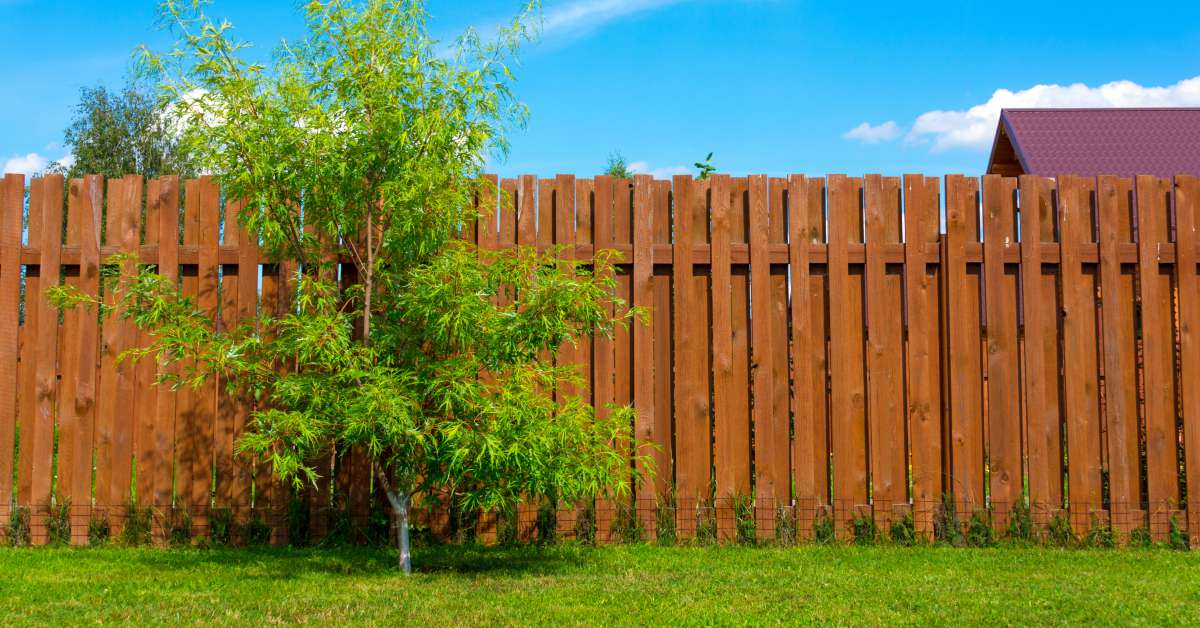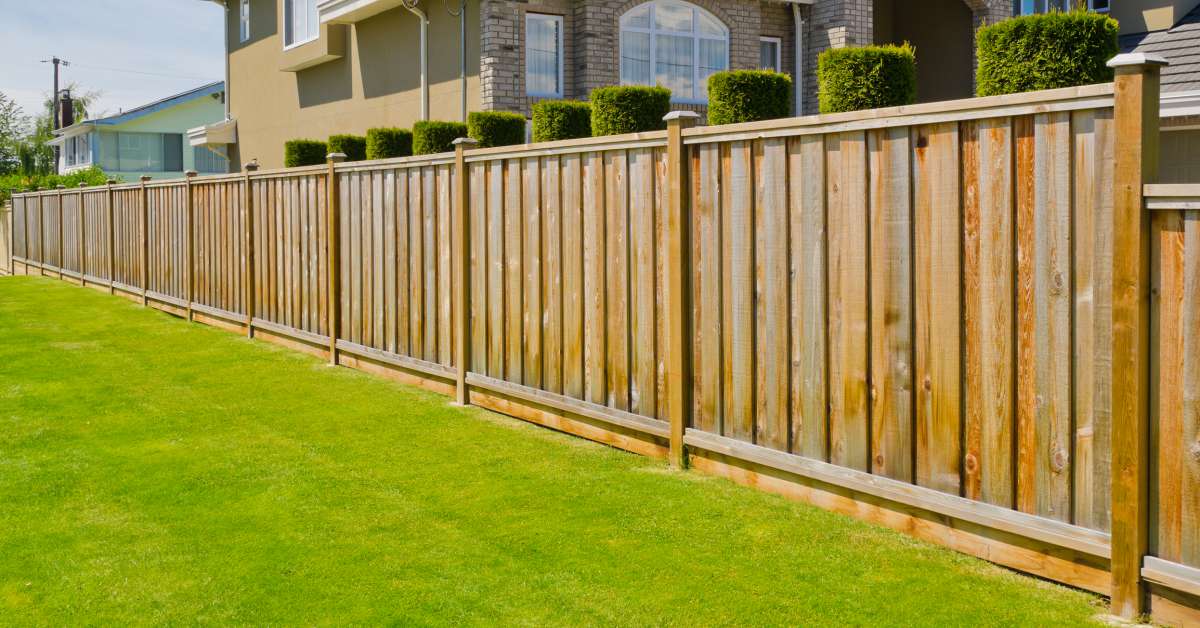A board on board fence is a type of privacy fence constructed with an overlapping pattern of vertical pickets. You will also see this style of fence called “board and batten fence”. This type of fence conceals the gaps left between the boards due to wood shrinkage. The first layer of pickets consists of 6” wide boards installed with a 1 ½” gap. The second layer consists of 4” wide boards installed to overlap the first layer and cover the gaps.
Pros and Cons of Board on Board Fences
Pros
- True privacy is the main advantage of a board-to-board fence over other wood privacy fences. With a typical stockade privacy fence, wood shrinkage causes gaps between the pickets that will compromise privacy. No gaps will ever be visible on a board-to-board fence due to the overlapping pickets.
- More visual appeal is created by the texture of the overlapping boards.
Cons
- A board on board fence will cost more because the boards overlap by 1″ to 1 1/2″. You will need up to 30% more pickets for a board on board fence than a stockade style fence. If you plan to finish your fence you will need more supplies to cover the additional pickets. The vertical boards must be finished before installation to cover the overlapping edges.
Types of Board on Board Fences
Wood
Wood is used to construct most board on board fences. Popular choices for installation of a wood board on board fence include:
- Pressure treated pine
- Eastern White Cedar
- Western Red Cedar
- Redwood
- Cypress (more often used in the southeastern US)
Example of a Board on Board Cedar Fence
Board on board fences constructed of cedar fence panels are one of the most popular and attractive options for a privacy fence. Cedar fencing continues to be the most popular alternative to pressure-treated lumber due to its natural color, durability, and wide availability.
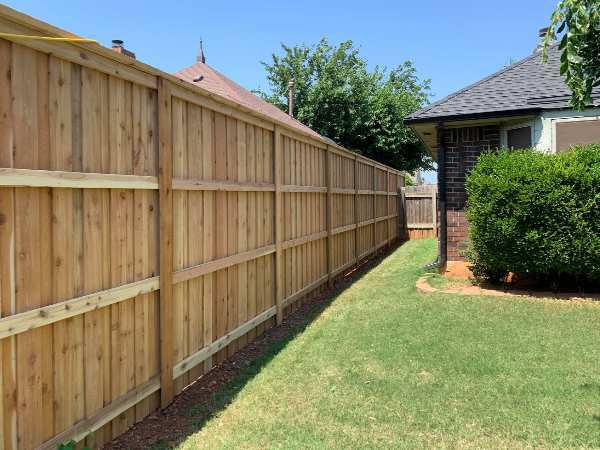
Vinyl
Vinyl is the option if you want a board on board privacy fence, but you want to be sure it will last.
Vinyl offers more durability and requires much less maintenance. A vinyl board on board fence won’t rot or crack due to changes in temperature or moisture. Insects also do not like the taste of vinyl.
Vinyl fencing can be cleaned with regular soap and water cleaning when it looks dirty. No expensive and time-consuming refinishing will be needed.
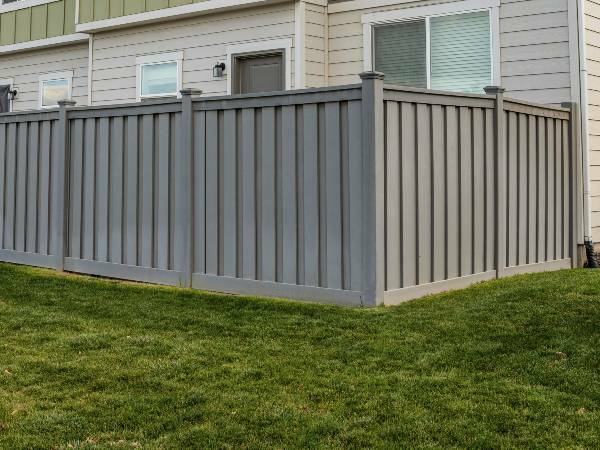
Composite
Board on board fences constructed of composite fence panels offer an attractive alternative to both wood and vinyl. Composite fencing will be constructed of fence boards manufactured with a filler of recycled sawdust covered by cap of recycled plastic. Also, composite fence will be stronger due to the density of the material.
Deck board manufacturers such as Trex, Fiberon and Timbertech now offer composite pickets and rail, or complete composite fence panels.
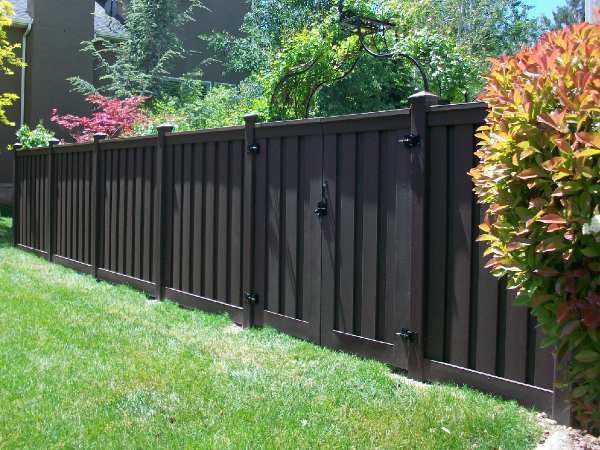
Board on Board Fences with Top Caps
Nearly all board on board fences will be finished with a top cap and trim on top of the fence.
The top cap is a horizontal board laid flat on the top edge of the fence. On wood fencing the top cap keeps moisture from reaching the exposed ends of the pickets. The ends of the pickets absorb water more easily than the surface.
The side trims are attached to the vertical surface of the fence just under the top cap. Side trims can be on one side or both sides of the fence.
You can add even more aesthetic interest with a lattice fence topper. A narrow section of lattice is attached to the top of the fence.
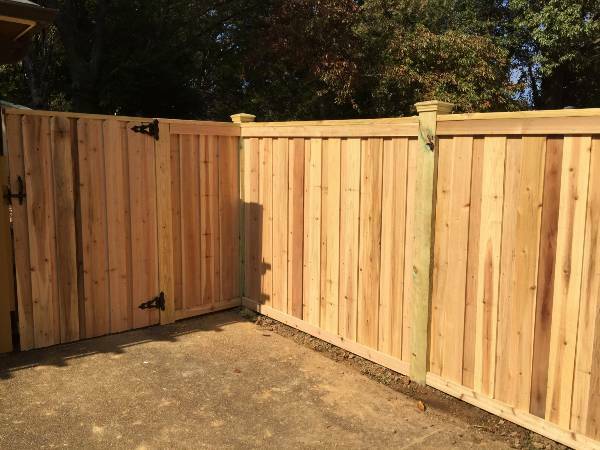
Board on Board Fence Panels
Wood and vinyl board on board fences are available in pre-built fence panels. These fence panels will be six feet in length and ready for installation. Your local big box store, such as Home Depot, should have an inventory of board-on-board fence panels.
Horizontal Board on Board Fence
A horizontal board on board fence places the pickets horizontally attached to the posts. Wood fences with horizontal boards have been gaining in popularity for their sleek modern look.
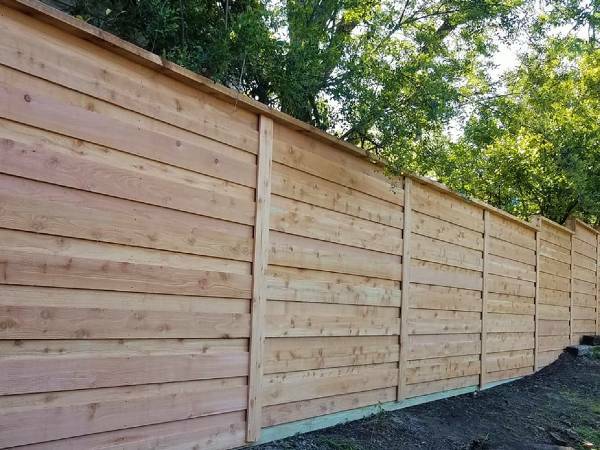
Note that quality lumber must be used to build a horizontal board on board fence. You do not want the horizontal pickets to sag in the middle.
Board on Board fence vs Side by Side
Board on board fences have overlapping pickets while a side by side fence will have pickets installed edge to edge. A stockade fence is an example of a side by side fence. As discussed above, a board on board overlapping fence will never have a gap while pickets installed in a stockade style fence may shrink over time.
Board on Board Fence vs Shadow Box Fence
A board on board fence has overlapping pickets installed on the same side of the horizontal rail. A shadowbox fence alternates the pickets on the opposite sides of the fence rail. While a board on board fence will never have a gap a shadow box creates gaps as part of the design.
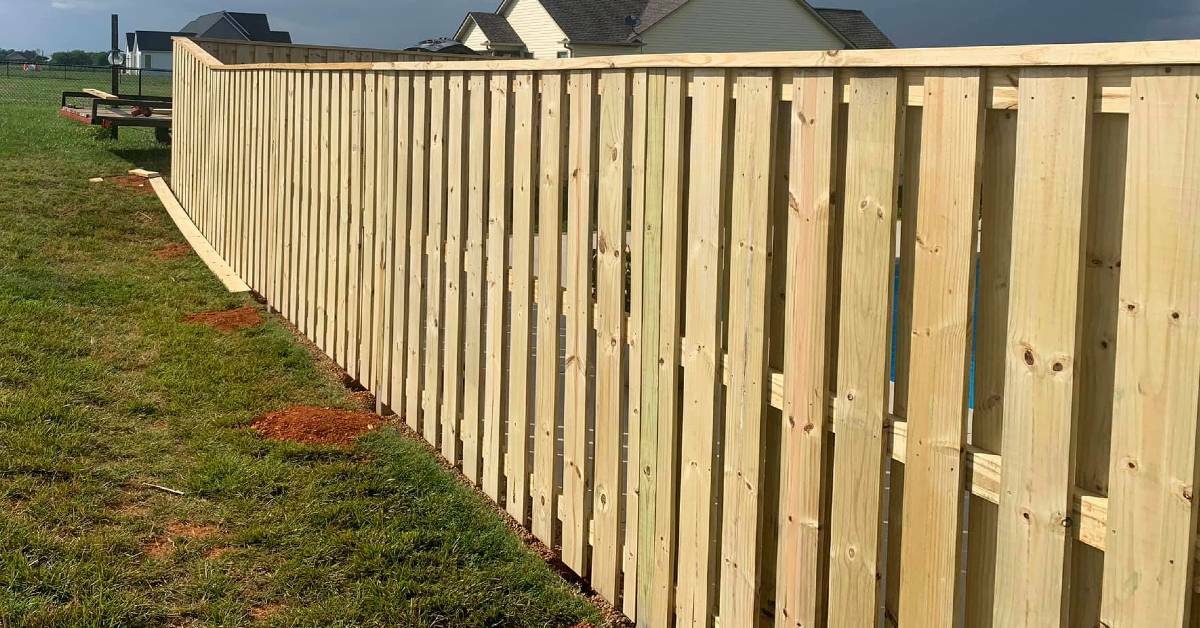
Is board on board fence more expensive?
As mentioned above a board on board fence will cost more per linear foot because the pickets overlap. You will need to calculate how many more pickets will needed for your length of fence.
How long will a board on board fence last?
The durability of a board on board fence will depend on your choice of materials.
Is board on board fencing a privacy fence?
Yes, board on board fences are one of the few complete privacy fences. The overlap means no gaps appear as the wood shrinks with age. The only other way to prevent gaps over time is to use tongue and groove fencing or fence panels.
How do you make a board on board fence with a kickboard?
A kickboard is installed along the bottom of the board on board fence for added structural support. Screw or nail the kickboard to the bottom rail.
Conclusion
Board on board fences are popular for their visual interest and aesthetic appeal. When deciding between different styles, always consider what best suits your needs and budget before making any final decisions!
Related Posts about Privacy Fences
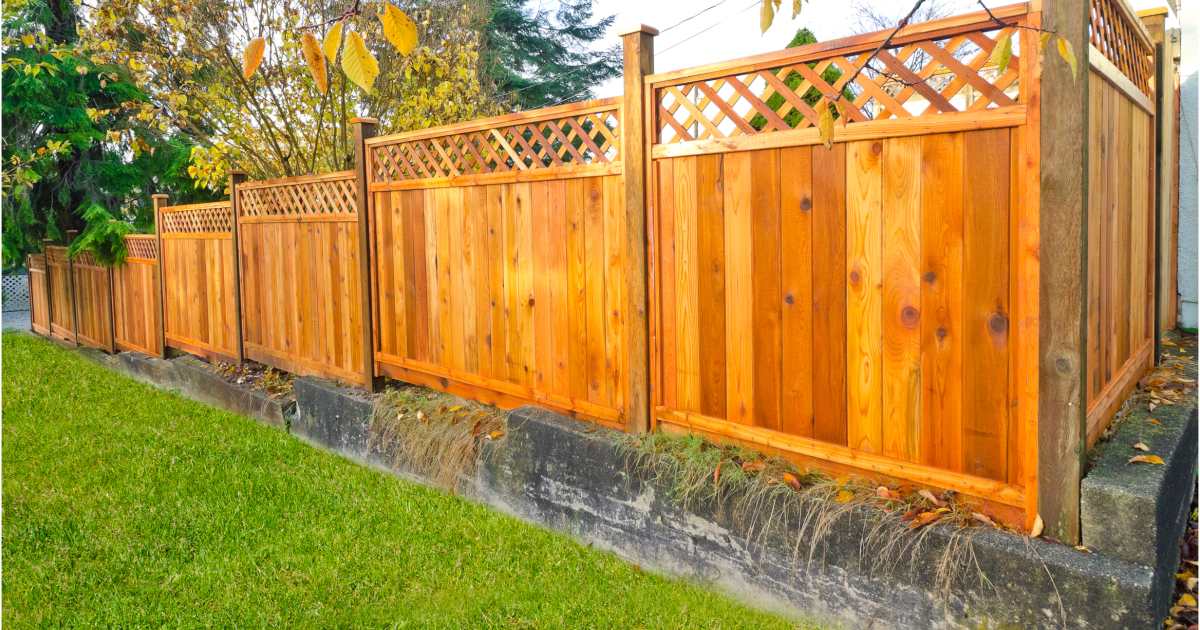
6 Types of Privacy Fences for your Home
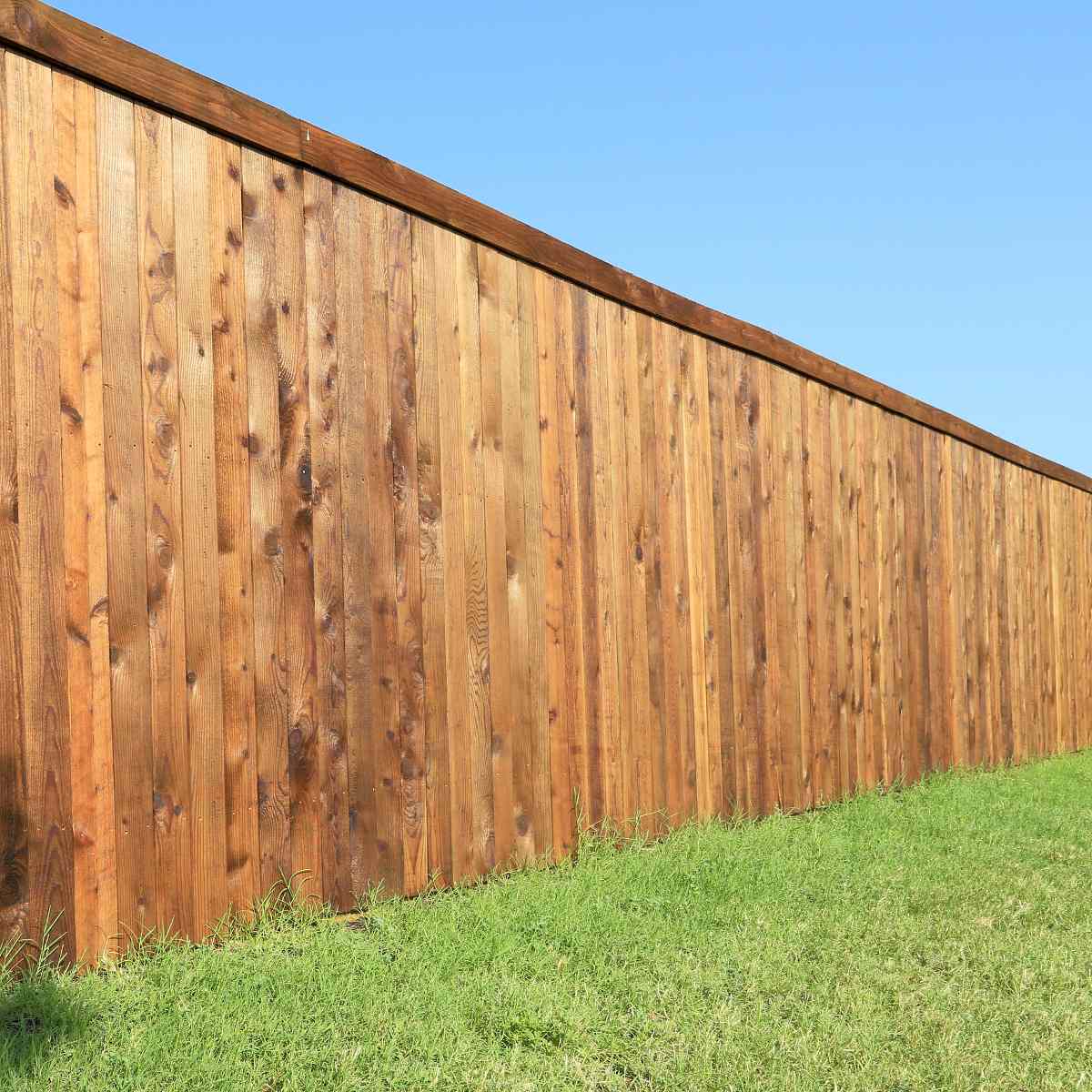
What is a Side By Side Fence?

Privacy vs Semi Privacy Fence
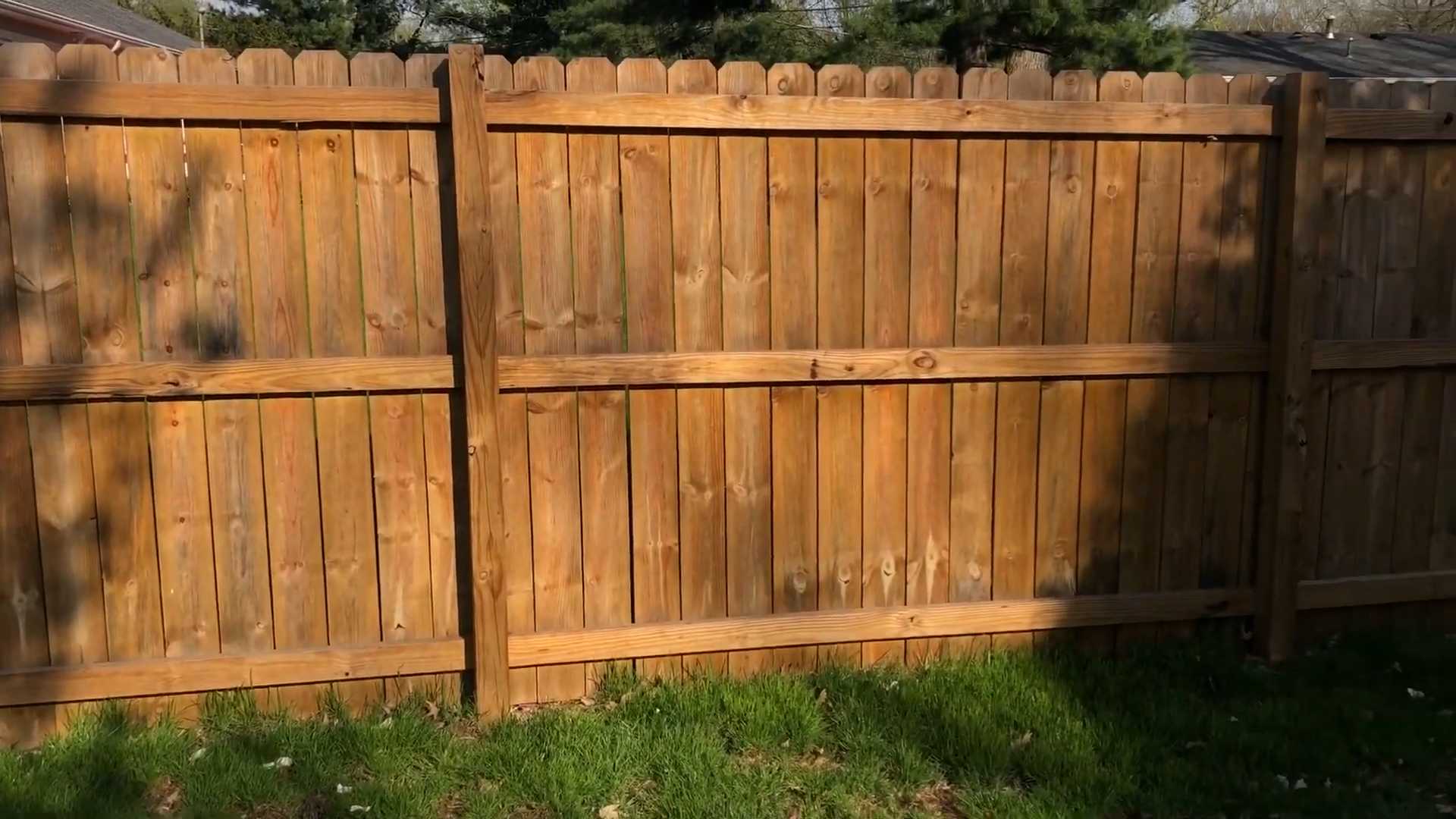
What Is A Stockade Fence?
